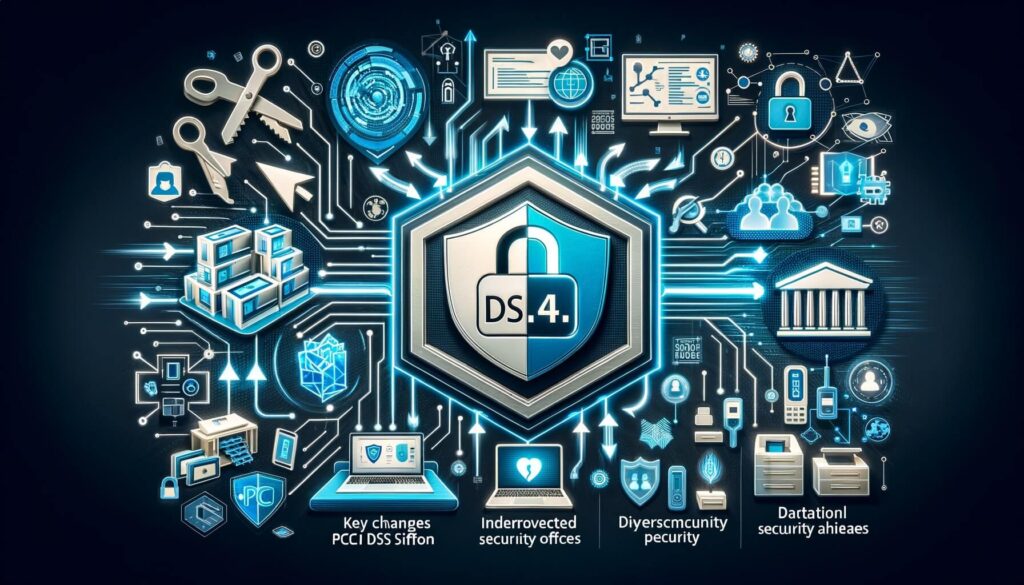In today’s digital age, data security is of utmost importance, especially in industries that handle sensitive customer information. Dental offices, like many other businesses, are required to comply with the Payment Card Industry Data Security Standard (PCI DSS) to ensure the protection of cardholder data. As technology evolves, so do the standards that govern it. In this article, we will explore the upcoming changes in PCI DSS 4.0 and how they will impact dental offices in 2025.
Understanding the Evolution of PCI DSS Standards

The PCI DSS was first introduced in 2004 as a collaborative effort between major credit card companies to establish a set of security standards for businesses that process, store, or transmit cardholder data. Since then, the standard has undergone several revisions to keep up with emerging threats and technological advancements.
The evolution of PCI DSS standards reflects the ever-changing landscape of cybersecurity. As hackers become more sophisticated, it is crucial for businesses to stay ahead of the curve and implement robust security measures. PCI DSS 4.0 aims to address the evolving threat landscape and provide dental offices with updated guidelines to protect sensitive cardholder data.
Key Changes in PCI DSS 4.0 for Dental Offices

PCI DSS 4.0 introduces several key changes that dental offices need to be aware of. These changes are designed to enhance data security and strengthen the overall compliance framework. Let’s take a closer look at some of the significant updates:
1. Expanded scope: PCI DSS 4.0 expands the scope of compliance to include emerging technologies such as cloud computing, mobile payments, and virtualization. Dental offices must now ensure that these technologies are implemented securely and in accordance with the standard.
2. Password requirements: The new standard introduces stricter password requirements, emphasizing the use of complex passwords and multi-factor authentication. Dental offices must enforce these requirements to protect against unauthorized access to cardholder data.
3. Encryption enhancements: PCI DSS 4.0 places a greater emphasis on encryption, requiring dental offices to implement strong encryption protocols for data at rest and in transit. This ensures that even if data is compromised, it remains unreadable and unusable to unauthorized individuals.
4. Secure software development: The updated standard includes guidelines for secure software development practices. Dental offices that develop their own software or use custom applications must follow these guidelines to minimize vulnerabilities and protect cardholder data.
5. Risk assessment and management: PCI DSS 4.0 emphasizes the importance of ongoing risk assessment and management. Dental offices must regularly assess their systems and processes for vulnerabilities and implement controls to mitigate risks effectively.
Strengthening Data Security: New Requirements in PCI DSS 4.0

PCI DSS 4.0 introduces new requirements that aim to strengthen data security in dental offices. These requirements focus on various aspects of data protection, including network security, access controls, and incident response. Let’s delve into some of the key requirements:
1. Network segmentation: Dental offices must implement network segmentation to isolate cardholder data from other systems. This helps minimize the impact of a potential breach and restricts unauthorized access to sensitive information.
2. Secure remote access: With the increasing trend of remote work, PCI DSS 4.0 emphasizes the need for secure remote access to cardholder data. Dental offices must implement strong authentication mechanisms and encryption protocols to protect data accessed remotely.
3. Secure coding practices: The new standard emphasizes the importance of secure coding practices to minimize vulnerabilities in software applications. Dental offices that develop their own software or use custom applications must follow secure coding guidelines to prevent potential exploits.
4. Incident response planning: PCI DSS 4.0 requires dental offices to have a well-defined incident response plan in place. This plan should outline the steps to be taken in the event of a security incident, including containment, eradication, and recovery procedures.
Implementing Secure Payment Processes in Dental Offices

To comply with PCI DSS 4.0, dental offices must implement secure payment processes that protect cardholder data throughout the payment lifecycle. Here are some best practices to consider:
1. Point-to-point encryption (P2PE): Implementing P2PE ensures that cardholder data is encrypted from the point of entry to the point of processing, reducing the risk of data interception. Dental offices should use validated P2PE solutions to secure payment transactions.
2. Tokenization: Tokenization replaces sensitive cardholder data with unique tokens, reducing the risk of data exposure in case of a breach. Dental offices should implement tokenization to protect cardholder data stored in their systems.
3. Secure payment terminals: Dental offices should use secure payment terminals that comply with the latest security standards. These terminals should support encryption and tamper-evident features to prevent unauthorized access to cardholder data.
4. Regular security updates: It is crucial for dental offices to keep their payment systems up to date with the latest security patches and updates. This helps address any known vulnerabilities and ensures the ongoing security of payment processes.
Securing Cardholder Data: Best Practices for Dental Offices
In addition to implementing secure payment processes, dental offices must adopt best practices to secure cardholder data. Here are some recommendations:
1. Data minimization: Dental offices should only collect and retain cardholder data that is necessary for business purposes. Unnecessary data should be securely deleted to minimize the risk of data breaches.
2. Access controls: Implementing strong access controls ensures that only authorized personnel have access to cardholder data. Dental offices should enforce unique user IDs, strong passwords, and role-based access controls to restrict access to sensitive information.
3. Employee training: Training employees on data security best practices is essential to ensure compliance with PCI DSS 4.0. Dental offices should provide regular training sessions to educate employees about the importance of data security and their role in protecting cardholder data.
4. Regular audits and assessments: Conducting regular internal and external audits helps dental offices identify vulnerabilities and ensure compliance with PCI DSS 4.0. These audits should include vulnerability scans, penetration testing, and assessments of security controls.
Assessing and Managing Risks in PCI DSS 4.0 for Dental Offices
Risk assessment and management are integral parts of PCI DSS compliance. Dental offices must identify and assess risks to cardholder data and implement controls to mitigate those risks effectively. Here’s a step-by-step guide to assessing and managing risks:
1. Identify assets: Identify all assets that store, process, or transmit cardholder data, including systems, applications, and physical devices.
2. Assess vulnerabilities: Conduct vulnerability scans and penetration tests to identify potential weaknesses in your systems and applications.
3. Evaluate risks: Assess the likelihood and impact of potential risks to cardholder data. This includes considering the probability of a breach and the potential consequences.
4. Implement controls: Implement controls to mitigate identified risks. This may include implementing encryption, access controls, and monitoring systems.
5. Monitor and review: Continuously monitor and review your security controls to ensure their effectiveness. Regularly update your risk assessment based on changes in your environment.
Training and Education: Ensuring Compliance in Dental Offices
Compliance with PCI DSS 4.0 requires ongoing training and education to ensure that all employees understand their responsibilities and follow best practices. Here are some tips for training and educating employees:
1. Awareness programs: Conduct regular awareness programs to educate employees about the importance of data security and the specific requirements of PCI DSS 4.0.
2. Role-based training: Provide role-based training to employees based on their responsibilities. This ensures that each employee understands their specific obligations under PCI DSS 4.0.
3. Testing and certification: Require employees to undergo testing and certification to validate their understanding of PCI DSS 4.0. This helps ensure that employees are knowledgeable and compliant.
4. Ongoing education: Keep employees updated on the latest security threats and best practices through ongoing education programs. This helps maintain a culture of security awareness within the dental office.
Frequently Asked Questions (FAQs)
Q1. What is PCI DSS 4.0?
A1. PCI DSS 4.0 is the latest version of the Payment Card Industry Data Security Standard, which provides guidelines for businesses to protect cardholder data.
Q2. When will PCI DSS 4.0 be implemented?
A2. PCI DSS 4.0 is expected to be implemented in 2023. Dental offices will have a transition period to comply with the new requirements.
Q3. What are the key changes in PCI DSS 4.0 for dental offices?
A3. Some key changes in PCI DSS 4.0 for dental offices include expanded scope, stricter password requirements, enhanced encryption protocols, and guidelines for secure software development.
Q4. How can dental offices implement secure payment processes?
A4. Dental offices can implement secure payment processes by using point-to-point encryption, tokenization, secure payment terminals, and regularly updating their payment systems.
Q5. What are some best practices for securing cardholder data in dental offices?
A5. Some best practices for securing cardholder data in dental offices include data minimization, implementing access controls, providing employee training, and conducting regular audits and assessments.
Conclusion
As technology continues to advance, so do the threats to data security. Dental offices must stay vigilant and adapt to the changing landscape of cybersecurity. PCI DSS 4.0 introduces new requirements and guidelines to enhance data security and protect cardholder data. By understanding the key changes and implementing best practices, dental offices can ensure compliance with PCI DSS 4.0 and safeguard sensitive customer information. Remember, data security is not just a legal obligation but also a responsibility to protect the trust and confidence of patients.
